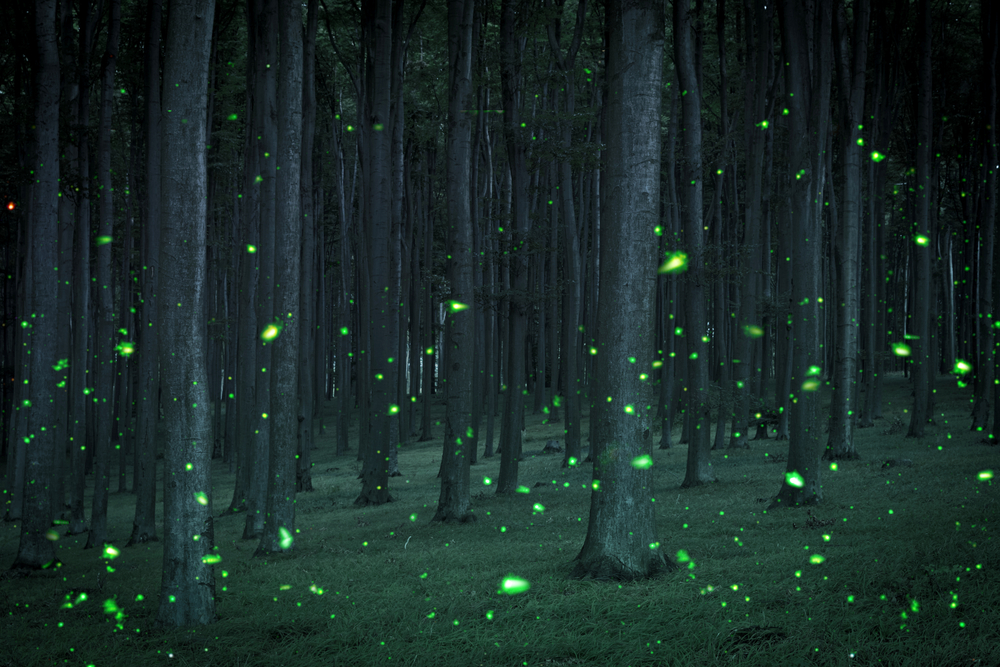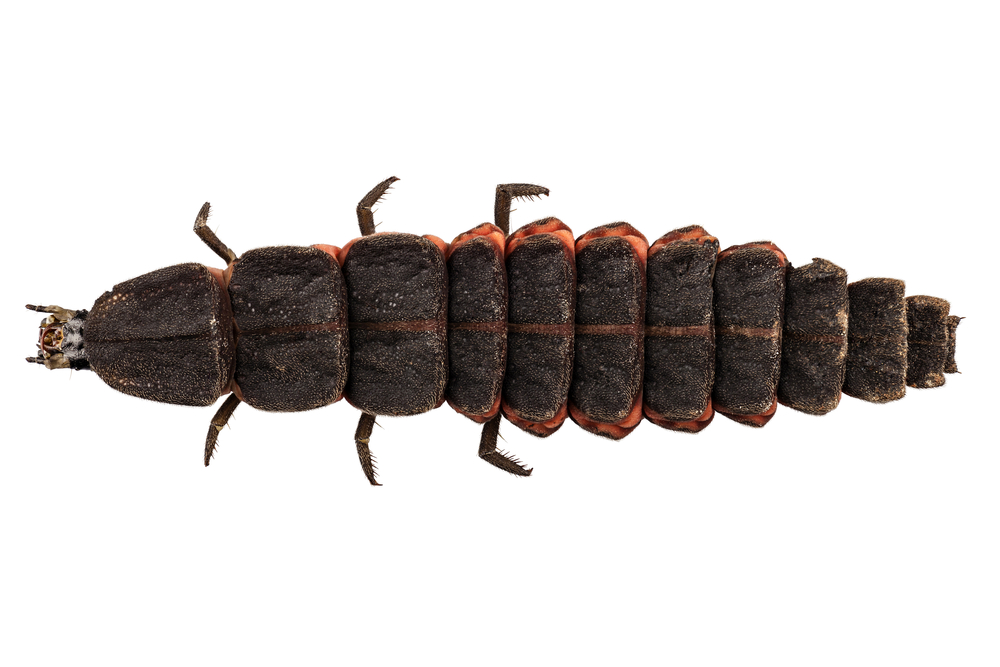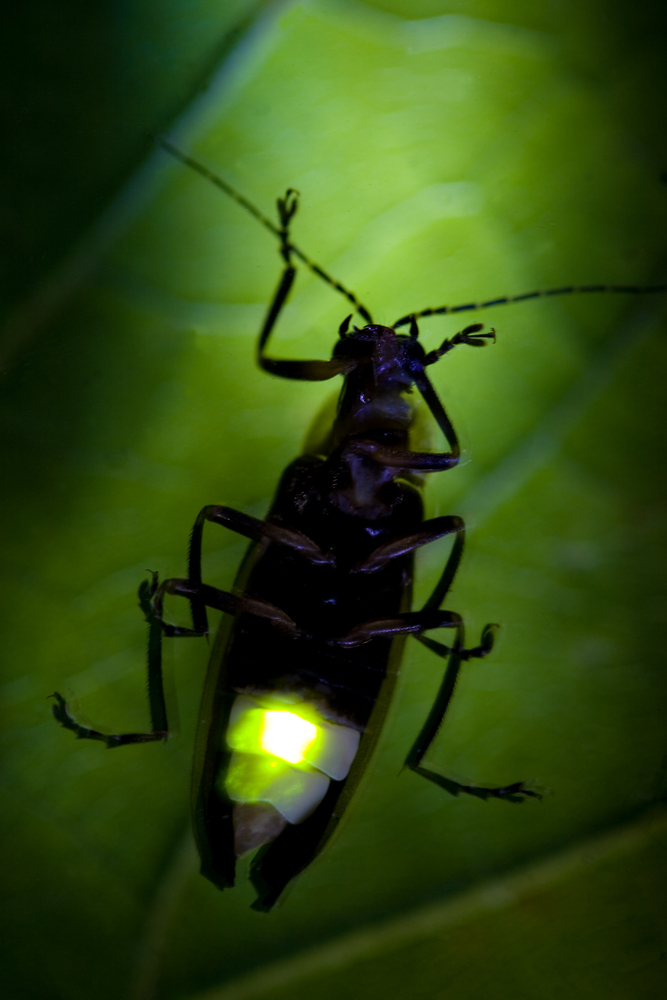When the calendar turns to July each year what’s the first thing you think of? If you’re like us here at The Bug Dude, you will undoubtedly think of the eminent holiday: the 4th of July, U.S. Independence Day. The thought will likely bring with it the anticipation of BBQs, swimming, local festivals, parades, and of course, fireworks. But did you know that there’s another celebration happening in early July that’s all about beautiful things glowing in the night sky? And though there’s no actual fire (as there is with fireworks), the word is in the title of this dedicatory day. If you haven’t guessed yet, the first weekend in July boasts World Firefly Day. This is a day to celebrate the gorgeous insects that remind us of our childhoods and the magic that can happen all around us. But what do you really know about these little glowing creatures and how can you help make them part of your July celebrations?

Why Are They Called Fireflies?
Fireflies, often called lightning bugs, got their name because of their unique ability to send glowing flashes of light from their body. However, both of their names are a bit misleading, as they are neither a fly nor a true bug. They are, in fact, a type of beetle. Indeed, even the “fire” part of their name is quite misleading as the chemical reaction that causes their glow is so extremely efficient that virtually 100% of the energy created is emitted as light. This means that no heat is emitted alongside their glow (unlike fire, or even the common light bulb), and in fact, their glow is referred to as “cold light.” The “lightning” part of their moniker is nicely descriptive, though, as they send distinct intermittent flashes from their abdomen, somewhat like a lightning flash in the sky. So if you want the most accurate name for these creatures, a lightning beetle would be the best way to go, but it’s definitely hard to resist the bucolic charm of the term firefly.
Now if you thought that the above issues gave the firefly a significant misnomer, consider that there are quite a few firefly species that don’t even glow as adults. In fact, in order to be considered a firefly, the glowing only has to happen at the larval stage, though it can of course happen at other stages (like adult or egg) as well. So it’s entirely possible that you could have encountered an adult firefly that looks just like an average beetle and you would never even know its true identity.

What Do Fireflies Look Like?
With over 2000 species of firefly in the world, and at least 5 common species in Texas, it’s safe to say that these insects can have a rather varied appearance. In general, the species you are most likely to encounter and recognize as fireflies will be between 5mm and 15mm long. They have a dark-colored oblong body with a red marking near their head, dark wing covers, and the last several segments on the underside of their abdomen will be a greenish-yellow (this is the section that can produce light). Their larvae are very different in appearance from the adult form and are flattened with several shield-like segments. You may have heard the term “glow worm” before; this term generally refers either to a glowing wingless adult female firefly or to the (also wingless) firefly larvae. Interestingly enough, one of the easiest ways to distinguish between firefly species is to watch their light show; different species will glow at different intervals, for different durations, and even in different shapes.
Where Do Fireflies Live?
Fireflies can be found on every continent except Antarctica. They prefer temperate and tropical regions, however, so will be most abundant in those areas. Different species of fireflies are drawn to different habitats within these ideal regions. In Texas, you can find species that prefer muddy creeks, open areas near woods, suburban lawns, or even along roadsides.

What Do Fireflies Eat?
Firefly larvae are carnivorous and generally consume small insects, worms, slugs, and snails. The majority of a firefly’s life is spent in this life stage. After 1 to 2 years as a larva, it will pupate and in just a few weeks will be an adult. An adult firefly lives only about 3 or 4 weeks and can have widely varied diets depending on the species. Some species mimic the light flashes of other firefly species in order to lure these insects in as prey, some feed on pollen and nectar, and some may eat nothing at all as adults.

What Makes Fireflies Glow?
The distinct form of bioluminescence that fireflies exhibit is caused by the interaction of 2 substances in their body: luciferin and luciferase. Interestingly enough, luciferase (which was originally only obtainable from fireflies themselves) is a useful chemical for scientific research and it can help detect diseased cells in humans as well as help test for food spoilage. While many fireflies manufacture their own luciferin, some get it as larvae by consuming milkweed roots, and there is at least one species of firefly that cannot make this chemical itself. In order for this last type of firefly to obtain the chemical, the females of this species will mimic the flash patterns of a different, luciferin-producing, species, luring in males of that species who are looking for a mate. The female will then attack the male of the other species and consume it alive until she has enough luciferin to pass on to her young.
The glowing flashes that fireflies emit are used as a form of communication. While this communication is generally done to attract a mate, it can also be used to help them defend their territory or even to warn away predators. While a firefly might seem like a harmless insect, the luciferin that makes them glow is in fact toxic and will make them a bitter and potentially dangerous snack for any predator.

How Do You Encourage Fireflies In Your Yard?
Fireflies are an idyllic symbol of summer, but you may have noticed that they are getting less and less common lately. Though the exact causes of population decline in these delightful insects aren’t known for certain, there are 2 undeniable contributing factors: loss of habitat due to human development, and light pollution. While those may seem insurmountable obstacles, there are some steps you can take to make your yard more hospitable to local firefly populations. And if you can convince your neighbors to take part, you will have an even better chance of seeing these beauties flying around your yard at night.
- Have an established garden with moist soil; this will give the females a safe place to lay their eggs
- Larvae will live in soil and leaf litter, so don’t just rake up leaves and throw them away, as you will potentially be throwing away future fireflies. If possible, create a compost area in a shady part of your yard for these leaves to reside in, and keep the area well-watered
- Keep your soil healthy and nutrient-rich to attract fireflies and their prey
- Keep a portion of your yard in a more natural state (logs, leaf litter, native grasses, etc.)
- Don’t over-mow your yard
- Reduce or eliminate light pollution in your yard, especially during the times when fireflies are most active (from May to October when the temperature is between 70° and 90°, starting just after sunset and lasting till around 10 pm). This means turning off any outdoor lights and covering your windows if you have interior lights on.
- If possible, create a small pond in your yard. Fireflies thrive in wet environments. Remember, though, that in order to be effective, it needs to be a non-treated environment (so a chlorinated swimming pool is not a viable option).
This July consider adding firefly watching to the list of nighttime magical light displays you can enjoy during the summer holiday. And remember, though fireflies are an insect most of us would heartily welcome into our yard, if there are other pests threatening your peaceful summer nights (or days), give The Bug Dude a call at 800-310-BUGS (2847) and let our expert technicians help get you quickly back to enjoying the long summer nights and enchanting glowing spectacles.
Further Reading:
“Firefly” – Field Guide to Common Texas Insects, Texas A&M AgriLife Extension
“Fireflies in Texas: Types and When You Can Expect See Them” – Kristin Hitchcock, A-Z Animals
“A Firefly Expert Illuminates the Insect’s Upcoming Season” – Asher Elbein, Texas Highways
“14 Fun Facts About Fireflies” – Sarah Zielinski, Smithsonian Magazine
Firefly Research & Conservation
“10 Facts About Fireflies You May Not Have Known” – Holly Taylor, Tennessee State Parks
Author Bio: Alissa Breach has been gaining knowledge and experience around pest control concerns over the last 13 years while working for Mid-Cities Pest Control. She has a creative writing BA from UW-Madison and is always pursuing new and interesting writing projects.




